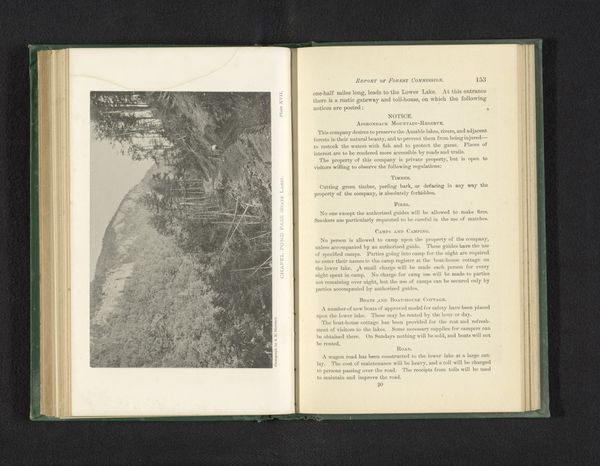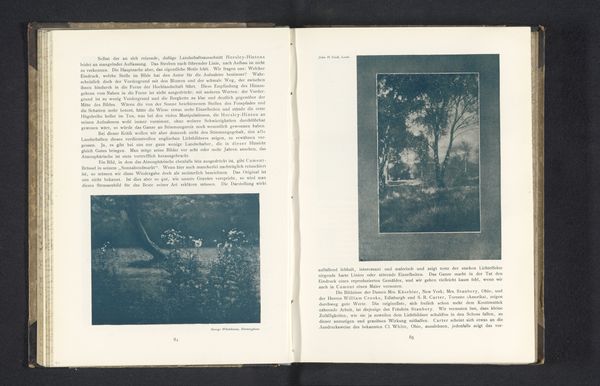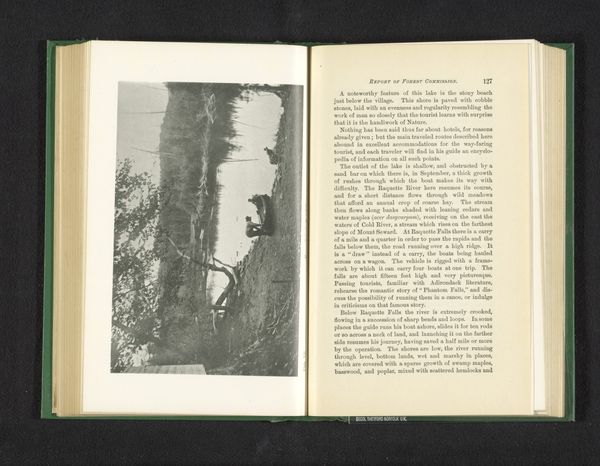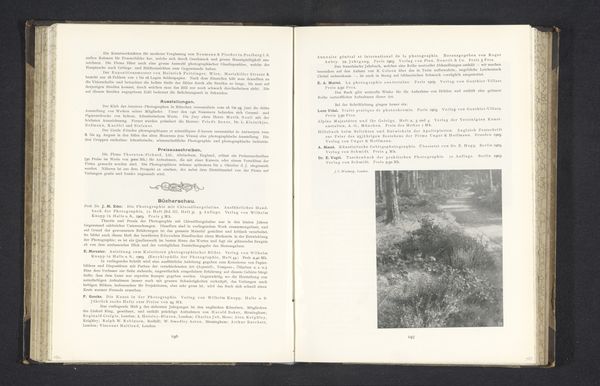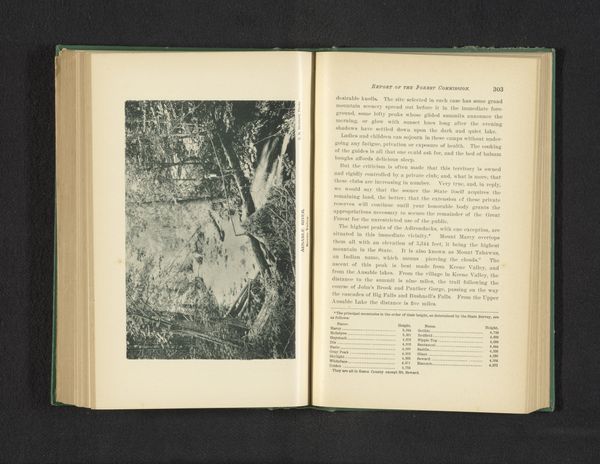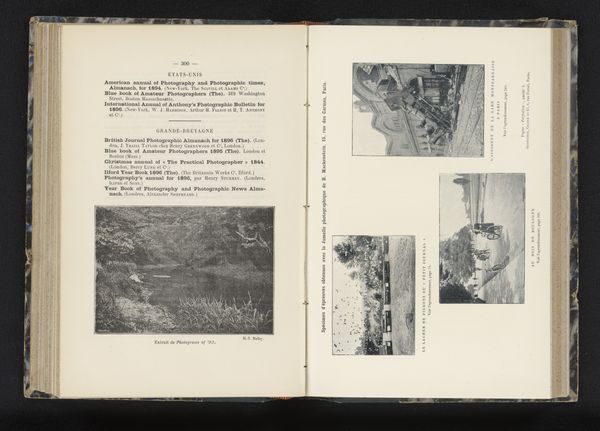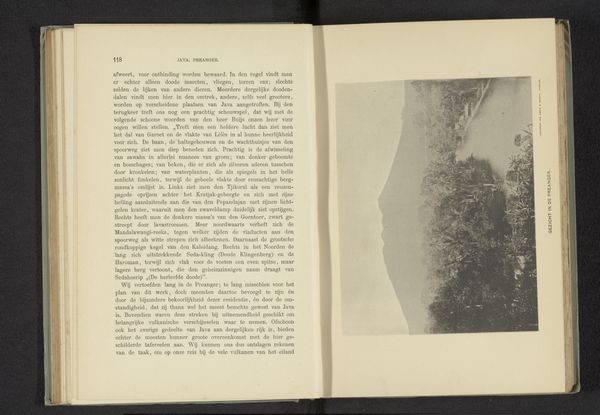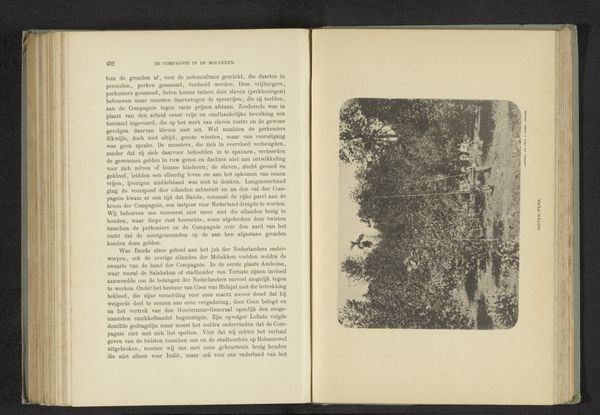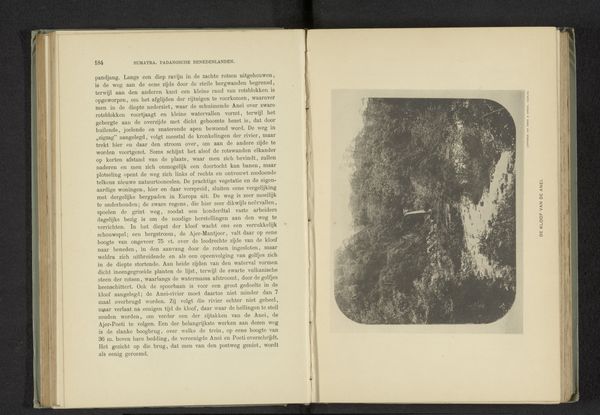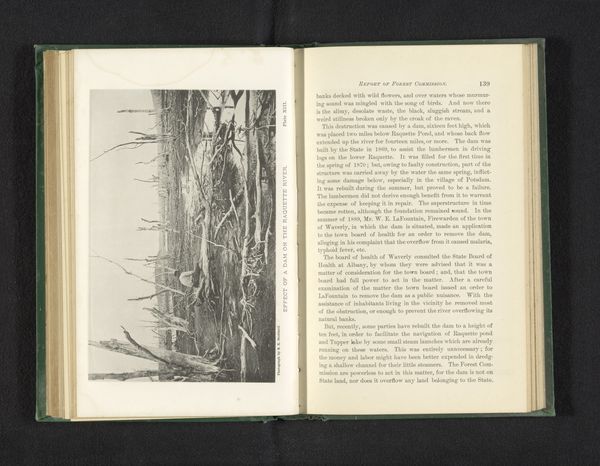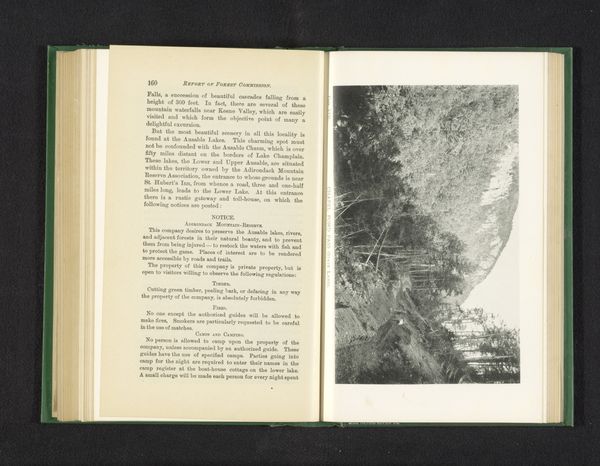
print, photography
# print
#
book
#
landscape
#
text
#
photography
#
german
Dimensions: height 139 mm, width 110 mm
Copyright: Rijks Museum: Open Domain
Curator: Today we're looking at a photo titled "Braambessen," which translates to "Blackberries." It's the work of Rudolf Eickemeyer and predates 1901. We're seeing it as a print in a book. What's your initial take? Editor: Well, it looks… peaceful. Like stepping into a quiet corner of the woods. The soft light, the textures of the foliage... there’s a palpable stillness, even though it’s just a printed image. Curator: Eickemeyer’s known for his Pictorialist style. Note the emphasis on atmospheric effects. Look at the distribution of light, how it almost dissolves form. What structural components support the image’s overall composition? Editor: Yes, it's true, that soft focus definitely lends a dreamy quality. It also flattens everything out. I find that almost dreamlike dissolving interesting... But perhaps less captivating because it's printed within the borders of a book's pages, surrounded by columns of didactic, explanatory text? The romantic forest dream clashes harshly with the mechanical rationality that the text tries to impart. Curator: It's relevant, of course, that this is seen as part of a publication on photographic technique. Do you find the textual environment impacting the experience of viewing the work as art? Editor: Precisely! It sets up this really interesting tension between the purely aesthetic, what Eickemeyer seems to be aiming for, and the pragmatic, instructive purpose of the book. Almost a conflict of purposes on the page itself, wouldn’t you say? Curator: One can argue that the book's intention provides context and therefore contributes to its value. And that the very notion of “purely aesthetic” is something to be dismantled. But setting that aside, any closing thoughts? Editor: It reminds me that beauty often thrives in unexpected places. Maybe even next to technical diagrams. A lovely moment caught in time and preserved—imperfectly, beautifully—on a page. Curator: A sentiment well put. It gives one pause about how different modes of conveying something work in tandem, doesn't it?
Comments
No comments
Be the first to comment and join the conversation on the ultimate creative platform.
